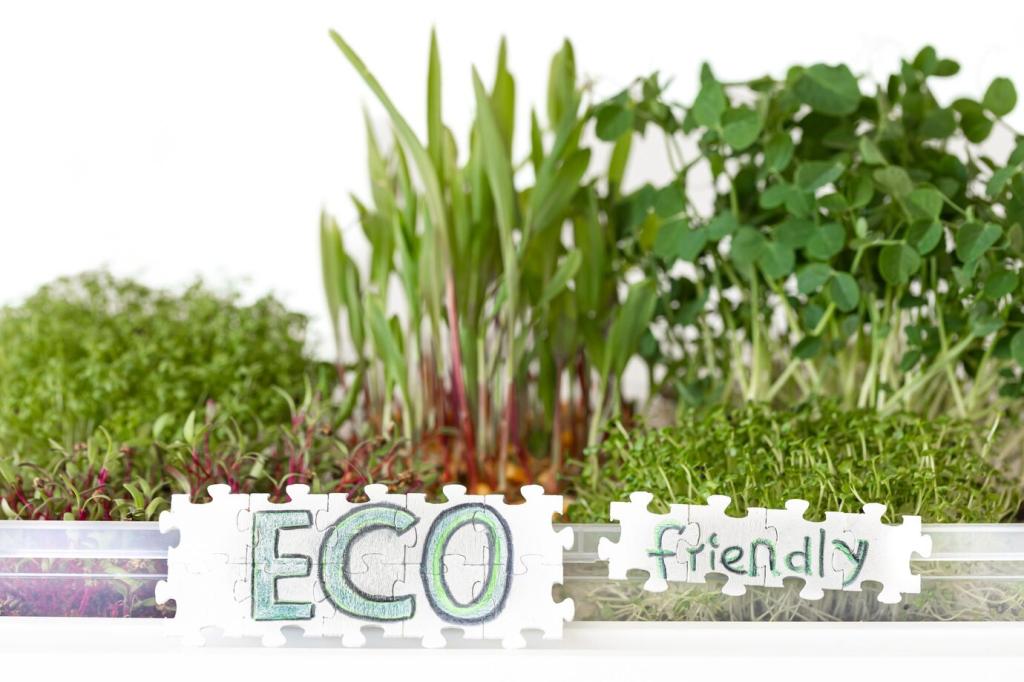
Sustainable Outdoor Landscaping Ideas
Chosen theme: Sustainable Outdoor Landscaping Ideas. Let’s design landscapes that sip water, nourish soil, and welcome wildlife—without losing color, comfort, or personality. Subscribe for new eco-smart inspiration, share your questions in the comments, and join a community turning yards into living, resilient ecosystems.
Water-Wise Design That Thrives on Less
Xeriscape Layers that Cool and Save
Group plants by water needs, stacking groundcovers, shrubs, and small trees to cast shade that reduces evaporation. Gravel swales and mulch slow runoff, while windbreaks temper drying breezes. Tell us your climate, and we’ll help you sketch zones that keep maintenance manageable and beauty consistently high.
Rain Harvesting Made Neighbor-Friendly
Link gutters to rain barrels or a discreet cistern, and guide overflow to a rain garden. A simple copper rain chain on my porch became a neighborhood conversation starter—and two months later, three houses added barrels. Post your setup and how many gallons you captured during the last storm.
Smart Irrigation that Listens to Weather
Swap sprinklers for drip lines, then add a weather-based controller or soil moisture sensors. Many households trim outdoor water use by up to half with this combo. Use morning schedules, test emitters each season, and log savings. Which controller brand treated you best? Chime in and help others choose.
Pollinator Corridors in Small Spaces
Even a narrow side yard can become a nectar highway with staggered bloom times and larval host plants. My postage-stamp front garden—milkweed, coneflower, and asters—brought monarchs within weeks. What two-square-meter mix would you recommend for beginners wanting butterflies, bees, and zero-fuss summer color?
Right Plant, Right Place, Fewer Headaches
Match sun, soil, and moisture to native preferences, and you’ll need less fertilizer and far fewer pesticides. Check local ecoregions and hardiness zones to avoid guesswork. Share your soil texture test results, and we’ll suggest natives that shrug off drought while supporting local food webs year-round.
Seasonal Succession for Year-Round Life
Design a relay race of blooms and seed heads: spring penstemon, summer black-eyed Susan, autumn goldenrod, winter switchgrass. Birds glean seeds while beneficial insects overwinter in stems. Comment with your favorite seasonal trio, and inspire a neighbor to keep their garden lively through every month.

Soil Health and Compost Alchemy
Mulch: The Quiet Climate Hero
A four to six-centimeter layer of shredded leaves or wood chips suppresses weeds, cuts watering, and steadily feeds microbes. During last summer’s heat wave, a simple straw mulch kept my tomatoes upright while unmulched beds wilted. What mulch materials are plentiful near you? Share sources and spreading tips.
Compost that Nourishes, Not Just Disappears
Balance browns and greens, keep piles airy, and let finished compost cure for stability. Leaf mold is a patient favorite, improving structure without fuss. Skip miracle myths; steady biology wins. Post your turning schedule and temperature highs, and we’ll help troubleshoot slow heaps or funky smells constructively.
Porous Paths and Roots that Breathe
Permeable pavers, gravel paths, and bark chips let rain infiltrate where roots need it most. Better infiltration reduces runoff, refills soil moisture, and protects nearby streams. Got heavy clay? Share a photo of puddling after storms, and we’ll suggest sub-base layers and techniques to keep pathways firm.
Reclaimed Materials and Circular Design
Salvaged brick, stone offcuts, and reclaimed timber create patios and edging with history baked in. Verify wood was not pressure-treated with old chemicals, and seal appropriately for durability. Share a before-and-after of your reuse project; your creativity could spark someone else’s low-impact weekend renovation.

Reclaimed Materials and Circular Design
Turn pallets into vertical planters, wire baskets into mossy pockets, and broken terracotta into snug habitat for solitary bees. Finish wood with plant-based oils, and design drainage thoughtfully. What’s your most surprising outdoor upcycle that held up through winter? Post photos and lessons learned for beginners.
Edible Landscapes and Permaculture Patterns
Guilds that Feed and Fix Soil
Around a fruit tree, layer nitrogen fixers, dynamic accumulators, and pollinator plants—think clover, comfrey, and yarrow. Mulch pathways, and let leaves decompose in place. What’s your best-performing guild combination for shade or sun? Compare notes to help others avoid crowded, thirsty, or incompatible companions.
Pathways of Productivity
Keyhole beds, curved paths, and hugelkultur mounds concentrate water and nutrients where roots can use them. The shapes invite wandering harvests while shrinking wasted space. Tell us how you’ve mapped traffic flow and hose reach, and we’ll offer tweaks to boost yields without expanding your footprint.
Community Harvest Moments
The first time neighbors tasted strawberries from our curb strip, three families asked for starts. Sharing surplus builds friendships as surely as compost builds soil. Host a swap day, label plants for curious passersby, and comment with your best community gardening anecdotes and practical coordination tips.
Low-Impact Lighting and Night Ecology
Dark-Sky Friendly Fixtures
Pick full-cutoff fixtures with warm color temperatures under 2700K to reduce glare and limit insect disruption. Aim light downward and install motion sensors. Share your before-and-after skies—did you notice more stars or moths returning? Your results can persuade a neighbor to rethink bright, unshielded floodlights.

